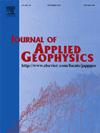Seismic prediction of fracture-cavity reservoirs using a rock physics model
IF 2.2
3区 地球科学
Q2 GEOSCIENCES, MULTIDISCIPLINARY
引用次数: 0
Abstract
Seismic prediction of fracture-cavity reservoirs is one of the vital tasks in oil and gas exploration. To enhance the accuracy of predicting fracture-cavity reservoirs controlled by faults, we propose an efficient prediction method for fracture-cavity reservoir based on a rock physics model. Firstly, we analyze the rock physics characteristics of fracture-cavity reservoirs and introduce fracture-cavity density parameters while simplifying the expressions of azimuthal anisotropy. We have derived a new azimuthal seismic reflection coefficient equation utilizing the fracture-cavity density parameter, which can accurately characterize the anisotropic characteristics of fracture-cavity reservoirs. Secondly, to improve the prediction accuracy of fracture-cavity reservoirs, we convert the seismic reflection coefficient equation into an azimuthal elastic impedance equation and perform Fourier series expansion. The second-order Fourier coefficients accurately represent the fracture-cavity density, allowing for the prediction of the distribution range of fracture-cavity reservoirs. The novel fracture-cavity reservoir prediction method effectively reduces the dimensionality of the azimuthal elastic impedance equation, enhances the stability of solving the objective function, and improves computational efficiency. Lastly, through model testing and inversion of actual data using the new method, we have successfully predicted the distribution range of fault-controlled karst fracture-cavity reservoirs in the Maokou Formation in the southern Sichuan Basin. The inversion results indicate that the fracture-cavity reservoirs coexist with faults, exhibiting vertical structural characteristics, rapid lateral variations, and strong heterogeneity. The fracture-cavity reservoirs predicted by the new method are consistent with the geological principles of fault-controlled karst in the Maokou Formation, providing support for exploration efforts in the fracture-cavity reservoir domain of the study area.
求助全文
约1分钟内获得全文
求助全文
来源期刊

Journal of Applied Geophysics
地学-地球科学综合
CiteScore
3.60
自引率
10.00%
发文量
274
审稿时长
4 months
期刊介绍:
The Journal of Applied Geophysics with its key objective of responding to pertinent and timely needs, places particular emphasis on methodological developments and innovative applications of geophysical techniques for addressing environmental, engineering, and hydrological problems. Related topical research in exploration geophysics and in soil and rock physics is also covered by the Journal of Applied Geophysics.
 求助内容:
求助内容: 应助结果提醒方式:
应助结果提醒方式:


